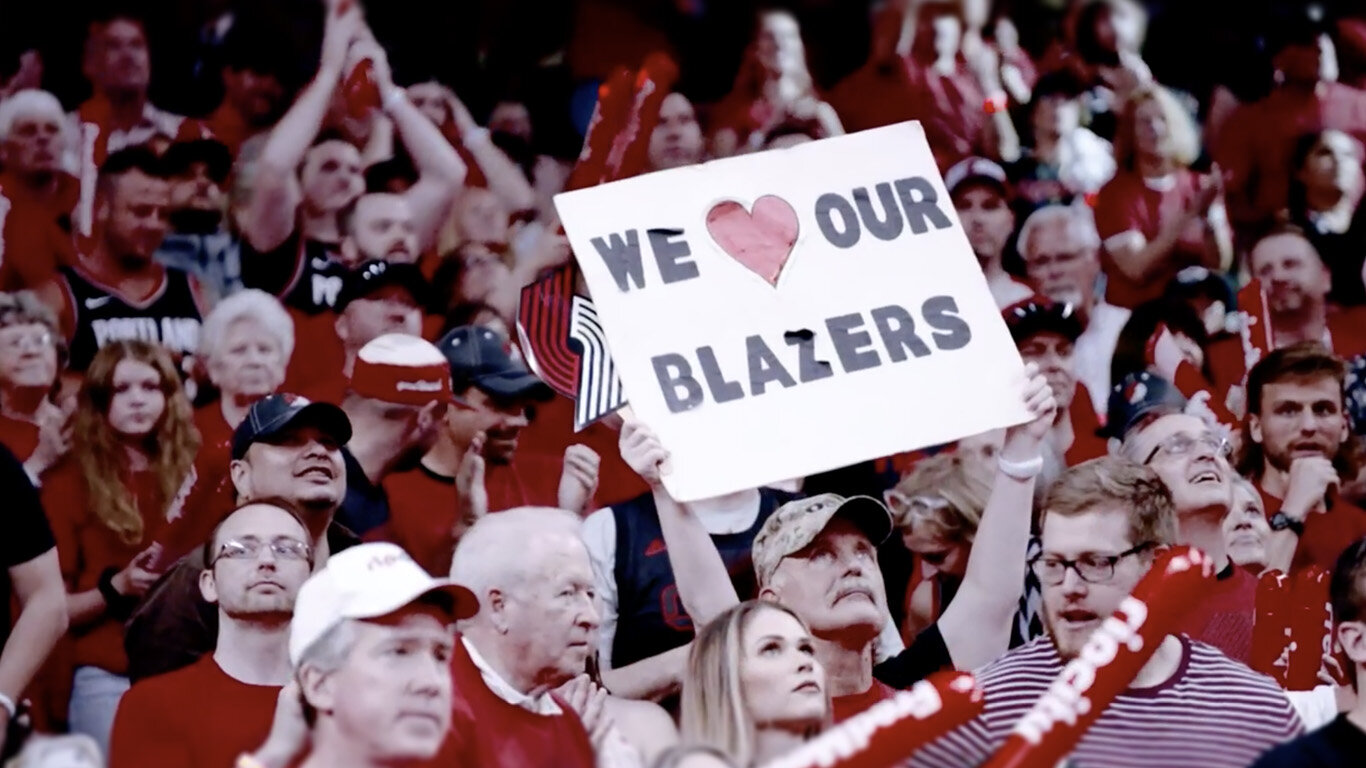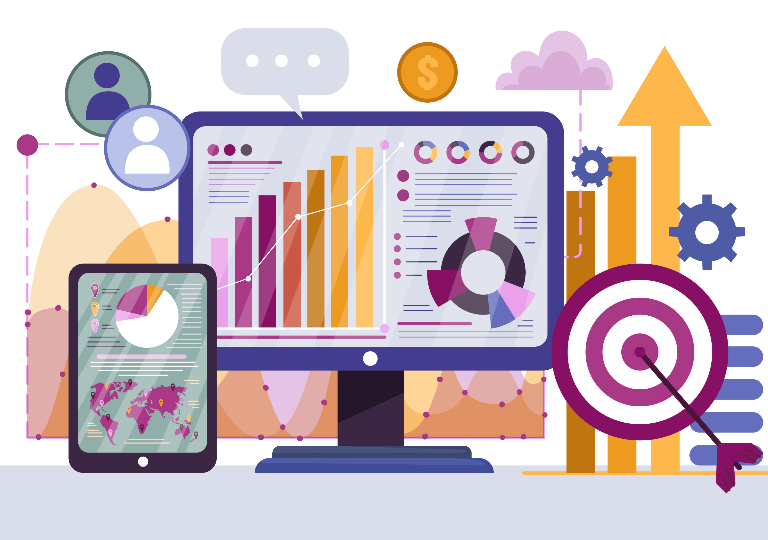We thought we’d share one of our favourite case studies from the second edition of our book, Winning with Data. It’s a great read, courtesy of the NBA’s 1977 Championship-winning team, and particularly looks at their approach to churn analysis and customer retention.
We hope you enjoy it, and if you want more, just let us know.
The Portland Trail Blazers (the Blazers) is an American professional basketball team based in Portland, Oregon – they compete in the National Basketball Association (NBA) as a member of the league’s Western Conference Northwest Division.

Mike Schumacher1 is their Director of Business Analytics and provided us with this case study through an email interview conducted throughout May 2020. We selected the Blazers to provide an insight into the application of data among those rights owners who have focussed on developing some important customer-centric capabilities: indeed the Blazers already position their customers as the centre of all their conversations, and ensure the customer is the driving factor in all decision-making. Immediately I can imagine some readers recoiling after that sentence because we are again using the term ‘customers’ instead of ‘fans’ but as we have already discussed in the book, I for one, welcome this approach. Viewing fans as customers is something that will minimise the natural inclination for rights owners to take their fans for granted, to ensure they deliver a great customer experience, and referring back to Mark Bradley’s words in Chapter 1, a rights owner ‘can only prosper if the customer feels valued.’
So on the basis that the Blazers do treat their fans as customers, we asked Mike to tell us about their approach to customer retention, using the principles we looked at earlier in the chapter to retain customers over a specific period, minimising their propensity to churn.
“As a starting point, we’re already using extremely targeted email campaigns and digital marketing, with lead-scoring and cart-abandonment tactics. Customer retention is a big focus, so we have a year-round retention model that we apply to our season ticket holders where our aim is to reduce the amount of effort it takes to understand fan churn risk.
We create one score per customer that continuously identifies how likely they would be to renew their season tickets for the next season and allows our service reps to be alerted and intervene early on with their accounts.”
Mike makes an interesting point here – a year-round focus on season ticket retention is probably different to many rights owners who may, instead, choose to focus on just the natural renewal period. But if your retention model is focussed on a specific timeframe, your actions might be based on the insight that is available to you at that time and with so many data points contributing to the model, a potential churn trigger could be missed.
Mike expands on this point for us: “This is a huge development compared to in the past where we would run one model each year right before our renewal campaign to try and understand how likely customers would be to renew their season tickets for the next season. While that process was useful, it wasn’t as proactive as we would like to be – this new retention model is a real-time look at how likely a season ticket holder is to renew their tickets at any time in the year. We also have a detailed breakdown of why the model predicts the likelihood for each customer and with this information available to all our service managers they can see where the customer stands when talking to them. It also lets us proactively reach out to customers long in advance of us asking for renewals when it can be too late to remedy issues.”
Ensuring this information is readily accessible to the Blazers’ representatives is a key part of their programme – it’s not just used to create personalised digital conversations/journeys. Outbound call centres for season ticket purchases, and a proactive approach to renewals, are less prevalent in sports across Europe but are a cornerstone of a US clubs’ sales activity. We asked Mike to tell us how his service and sales team use the programme outcome:
“The retention-model scores are made available in our CDP provided by StellarAlgo, but also available directly in CRM on the customer record. Our service managers are nurturing their client relationships and use the model results to guide those conversations. Within CRM there is a history of the retention-model score and how it has changed over time. There is also a list of reasons and attributes that have caused the score to change over time.”
We discussed earlier in this chapter that to create a retention model we need certain metrics. Here Mike tells us about their approach to sifting through the vast quantities of data to identify what’s needed:
“We take all our customers’ purchase history – which Blazer games and concerts they’ve purchased tickets for, the form of payment they’ve used and their contact information. We also have hundreds of demographic and psychographic data points that are made available by Ticketmaster and Acxiom, plus our sales agents and service managers also collect several additional data points. Each customer profile also includes how long they’ve been a ticket holder, how many games they’ve attended, how well they utilise the tickets they purchased, do they share their tickets, and do they try and resell them. And in addition to all of this we have our customer interactions – email campaign responses, online chat interactions, and notes added from our customer service phone calls.”
To maintain the Blazers’ retention model most data points are refreshed daily, and while the additional data points Mike refers to above add more accuracy to their formulas, it’s transactional data that’s the most critical. This makes your ticketing partner, and their willingness to provide you with comprehensive and timely access to your customer data, crucial to the success of your retention strategies for ticketing customers – demographic and behavioural data alone will not provide you with the information you need. This is an important point because 99.9% of rights owners use a third party for ticketing systems so you need their agreement that this data should come to you, and their co-operation to ensure you have access.
So how does Mike use all this information – what does he do with these data points, his customer profiles and the output from his segmentation model?
“Our digital marketing efforts are quite advanced and we closely monitor and adjust the performance of our campaigns and audiences through metrics like return-on-advertising-spend (ROAS), cost-per-acquisition (CPA), cost-per-thousand (CPM) and purchase frequency. Automation remains an ongoing challenge for us even though StellarAlgo helps us more easily segment and activate our audiences through dynamic lists. When we put the effort in to carefully segment, and then create an audience in Facebook, we want to maximise the value of our campaigns by adjusting the Facebook audience to remove recent buyers or add new people who meet the audience criteria automatically. For example, if in our universe we have concert prospects for a Rose Quarter event (a 30-acre area in Portland that comprises the Moda Center, home of the Blazers, a second arena and a theatre) our system will automatically pull them into our campaigns and target them in Facebook. It will then also tell us how our Facebook audience is performing and remove concert prospects who have bought so we don’t spend money on continuing to advertise to them or oversaturate them with ads.”
Like many modern marketers, the Blazers use cross-channel digital marketing – this is the use of multiple channels that provide customers with a consistent experience across your digital estate, mapped into customer journeys for each segment or persona. Mike expands on his multichannel approach here:
“We use multiple platforms for channel activation. For single game sales and awareness campaigns we use a JavaScript pixel from our marketing campaign platform, Marketo, to pull cart abandoners into our data warehouse and retarget them via email. We also use social sign on information and our CDP to build custom audiences we push into Facebook. We then track our activation efforts from here as well as manage audience suppression when they’re getting saturated (with our messages) or have bought. For search, we use Google’s ad platform but there is very little in terms of targeted campaigns there, nor do we do any tracking of referral from search at an individual customer level.
In terms of our retention activity, there’s no automated personalised content for those at risk of churn for any product but automated this is something we are looking at. Leveraging a CDP like StellarAlgo certainly provides a foundational element to support personalised content via predictive scoring and analysing web behaviour.”
In Chapter 5, we talk about the use of dashboards to provide a quick and easy overview of current business performance using charts and graphs. The use of dashboards in this case highlight trends that can be measured in order to assess the efficiency of a retention model, and as you might expect, the Blazers also have this area covered:
“We have our own internal reporting suite that utilises Tableau, but there are a number of useful reports in the StellarAlgo platform that we utilise. The one I use the most is the customer journey dashboard – it shows the customers purchasing path from year to year. For example, if a single game buyer later went on to purchase a package and become a season ticket holder you can see that visually and at an aggregate level. We also leverage the platform’s segment tool to build no-code access to segments to help our (internal) stakeholders outside of the analytics team service themselves instead of relying on us to run SQL queries.”
As the development of a retention strategy might still be a far-off option for many rights owners, we asked Mike what advice he’d share with his peers:
“I think it depends on where you are at as an organisation. If you haven’t stepped into this area yet, I would recommend speaking to someone like StellarAlgo about industry best practices and capabilities rather than trying to reinvent the wheel. Our yearly retention model was useful, but had this technology been available to me earlier on, I would have pursued the more real-time models. I am proud of the static-retention models we used in the past – they were able to predict the overall renewal expectation within 1% on most years, but did not give us the confidence and actionability that a real-time model did. It was always a big guess at the end of the year which felt risky. At one point we had contemplated creating our own real-time retention model but didn’t have the internal resources to pull it off. The StellarAlgo real-time retention-model scoring is great and if I could go back and do anything differently, I would have prioritised this project earlier and brought them in earlier on.”
While Mike and the Blazers may be advanced compared to the majority of rights owners, they’re not sitting still – indeed in Chapter 2 we talk about the implementation of CRM as a journey, not a destination, or a project.
“We are constantly tweaking our formulas and data models. Some require more attention than others, but in general we are always assessing their accuracy, adding more data points where applicable and reimplementing. You never know where a new data point will come from either. With all the recent happenings with COVID-19, we are even looking at how this could impact our models as the coming season may not fit the normal patterns.”
We discuss the impact of COVID-19 in Chapter 10, how the global pandemic that was first identified as a virus in December 2019 has impacted the world of sports, but as Mike’s insightful last comment highlights, it also wreaked havoc with our fan-behaviour models!
If you want to know more about any of the areas Mike discussed, or want an introduction to StellarAlgo, get in touch – we’d love to talk to you.
- Mike Schumacher is now Vice President, Technology & Analytics at the Trailblazers. Congratulations on the promotion Mike! ↩︎




